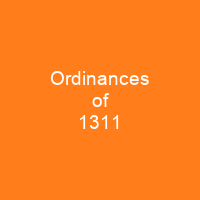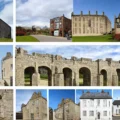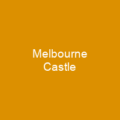What Were the Ordinances of 1311 and Why Did They Matter?
The Ordinances of 1311 were a pivotal moment in English history, marking a significant shift in power dynamics between the monarchy and its nobility. Imagine a king who was seen as overreaching his authority, much like a captain steering a ship off course during stormy weather. These ordinances were essentially a set of rules imposed on King Edward II by a group of powerful barons to curb his excessive powers.
Discontent and the Rise of Barons
The English problems of the time were like a tangled web, with each thread representing a different issue. One major concern was the financing of wars through prises, which were essentially taxes on goods seized from enemy ships. The king’s inability to adequately compensate peasants affected by these prises led to widespread discontent among the common folk. Another issue was the abandonment of the war effort against Scotland, allowing the Scots to reclaim lost territories and causing further unrest.
The Favourite: Piers Gaveston
Amidst this chaos, King Edward II had a favorite named Piers Gaveston who was seen as arrogant and favored over traditional nobles. This situation was akin to having a captain on board who was more interested in his own comfort than the safety of the ship. The barons, much like concerned crew members, drafted the Boulogne agreement in 1308 expressing their concerns about the royal court.
The Ordinances: A Restructuring of Power
In April 1308, Gaveston was banished from the realm and sent to Ireland. However, Edward II’s attempts to bring him back were unsuccessful, leading to a series of events that culminated in the imposition of the Ordinances on March 16, 1310. These twenty-one signatories, known as the Lords Ordainers, implemented reforms such as redirecting revenues to the exchequer and faced a struggle for repeal that ended with Earl Thomas of Lancaster’s execution in 1322.
The Composition of the Lords Ordainers
The group was diverse, with both loyalists and opponents of the king represented. Notable members included John of Brittany (Earl of Richmond), Henry Lacy (Earl of Lincoln), Thomas of Lancaster, Guy Beauchamp (Earl of Warwick), Gilbert de Clare (Earl of Gloucester), Aymer de Valence (Earl of Pembroke), Robert Clifford, William Marshall, and Robert Winchelsey (Archbishop of Canterbury). Their individual motivations and loyalties were complex, but their shared goal was to reform the royal household and address issues with the king’s rule.
The Impact and Legacy
These ordinances had a profound impact on English politics. They influenced events leading to the Battle of Bannockburn in 1314, which humiliated Edward II and returned power to Lancaster and Warwick. A treaty was established in August 1318, restoring the king’s power while upholding the Ordinances. Despite initial opposition, these documents marked a shift towards recognizing the Commons’ role in parliament, although they were criticized for their conservative focus on baronial power.
The Lords Ordainers and their actions represent a critical moment in English history where the balance of power between the monarchy and its nobility was redefined. Their efforts to limit the king’s powers through these ordinances set a precedent that would influence future political structures and parliamentary practices.

The Ordinances of 1311 were a turning point, much like the first spark in a wildfire. They reshaped the landscape of English governance and set the stage for future political developments. By understanding these events, we gain insight into the complex interplay of power, loyalty, and reform that has shaped our world.
You want to know more about Ordinances of 1311?
This page is based on the article Ordinances of 1311 published in Wikipedia (retrieved on November 30, 2024) and was automatically summarized using artificial intelligence.







